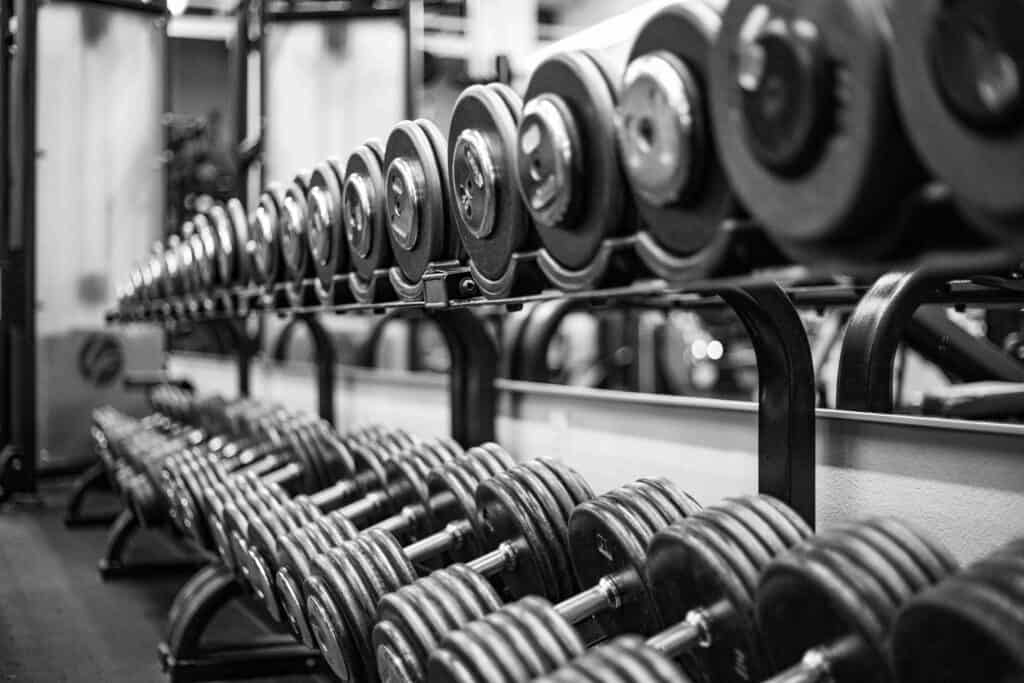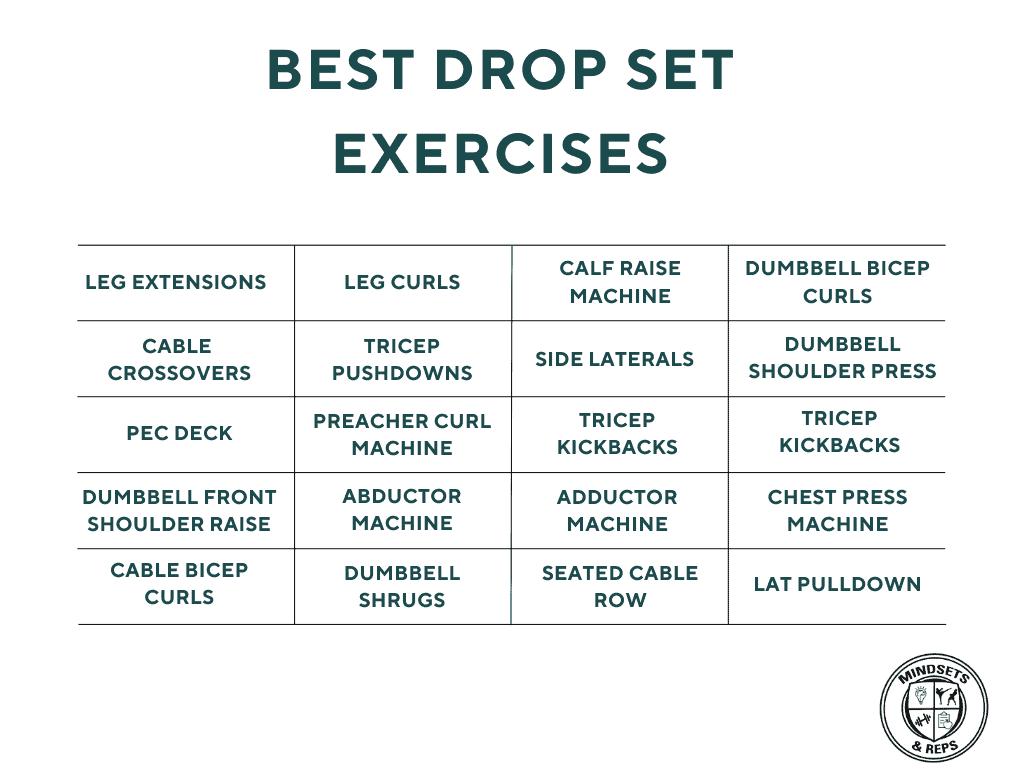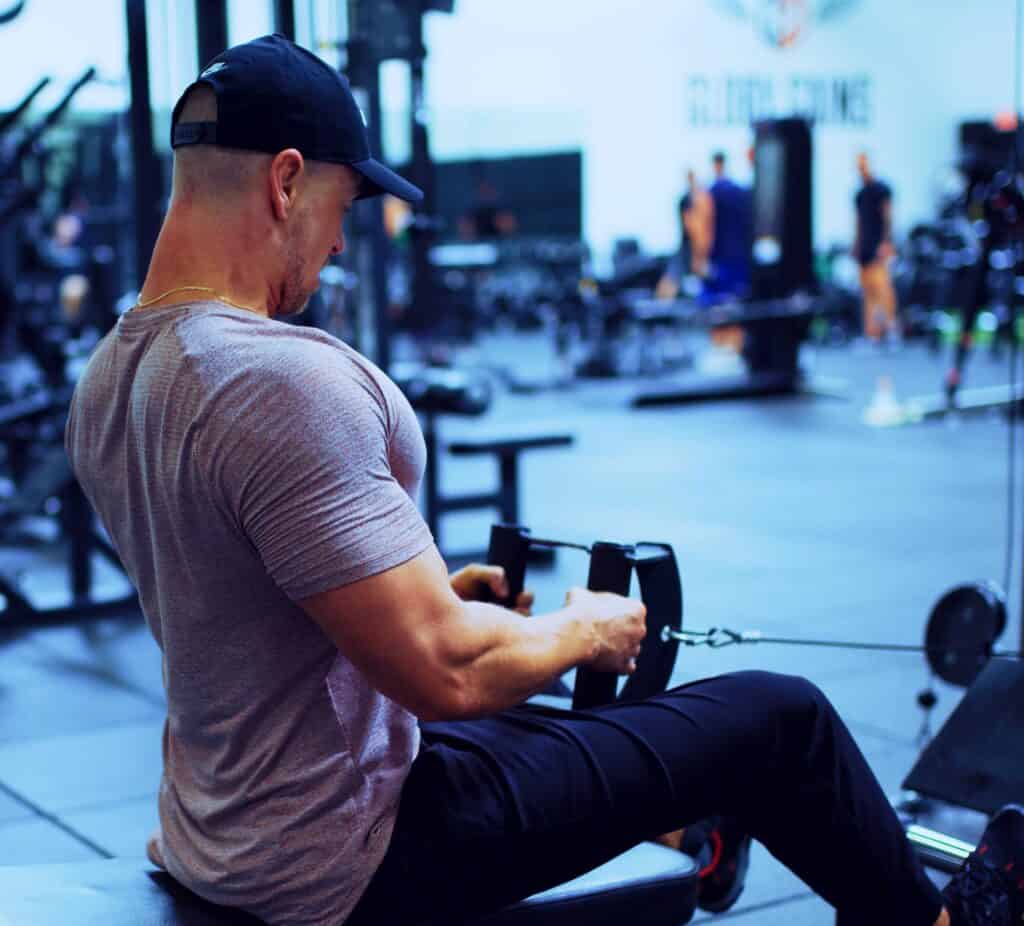
Drop sets and supersets are two powerful techniques that can bring novelty and increase the intensity of your current workout routine.
Drop sets involve performing a series of consecutive sets with the same exercise, each set with a slightly lower weight or resistance than the previous set. All of this occurs with no or minimal rest.
Supersets, on the other hand, involve performing two different exercises back-to-back, either targeting the same muscle group or the antagonist muscle group. Like drop sets, this occurs with minimal rest.
Both techniques provide a welcome challenge toward a routine gone stale, but they can also help break through plateaus and push you towards your hypertrophy goals. If you are a personal trainer, you will find that supersets and drop sets can also break up the monotony and keep things fresh for your clients.
However, it’s important to remember that drop sets and supersets should be used to complement the workout program overall. While they can be incredibly effective, they should be used strategically and sparingly to avoid junk volume.
What Are Drop Sets?
Drop sets involve performing a set of exercises with decreasing resistance or weight, within the same exercise. The goal of drop sets is to increase muscle fatigue and promote hypertrophy by pushing the muscle to work harder and longer than it would during a regular set.
Drop sets also increase the total volume placed on the muscle during the workout. Volume, load, and mechanical tension are the primary factors in muscle growth.
Advantages of Using Drop Sets for Muscle Growth
Sometimes straight sets don’t feel like enough to elicit muscle growth. Straight sets are the typical “3 sets of 10 reps” type routine with progressive overload that most people perform. While straight sets should be the basis of the program, drop sets can add much needed intensity to lagging muscle groups.
Bringing a muscle group close to fatigue is essential for growth, especially as the lifter becomes more advanced. For certain exercises, there can be a unique scenario where adding weight craters your total reps, and thus volume.
For example, with an exercise like cable crossovers I’ve noticed that adding just a few pounds can have a major negative impact on form and total work. I may be able to do 15 reps with ease, increase the resistance, and only do 6 subpar reps on the next set. This is an example of an exercise where drop sets would work to increase total volume and maintain intensity without sacrificing form.
Exercises That Work Well With Drop Sets
When using drop sets, you need to consider safety and ease of use. You would never use drop sets for something like squats or deadlifts, as the stimulus-to-fatigue ratio is poor. Eventually you would lose form, even when using a lighter load. The worst case scenario would be an injury.
This doesn’t make them bad exercises, just not appropriate for drop sets.

Many people use drop sets for a barbell bench press, but this may not be the best strategy. The key is to have as short a time as possible between drop sets. This is why machines work so well since you just have to pull out the pin and drop the weight.
With a barbell bench press (provided you don’t have a spotter) you have to get off the bench, strip the weight off both sides, re-establish yourself on the bench, unrack and go. This takes too much time, making it suboptimal.
What Are Supersets?
Supersets involve performing two exercises back-to-back, typically targeting the same muscle group or the antagonist muscle group. Unlike drop sets, which involve performing multiple sets of the same exercise with decreasing resistance, supersets allow you to work different muscles in quick succession.
There are two different types of supersets; agonist and antagonist. Agonist supersets work the same muscle group back-to-back, while antagonist supersets work different muscles.
Advantages of Using Supersets
Supersets allow you to perform more work in a short amount of time. This is advantageous for people who have high volume workouts or people with busy schedules.
Agonist supersets in particular allow you to bring muscles close to failure. Unlike drop sets which use the same exercise, supersets allow for more creativity.
For example, say you want to focus on quad development. As mentioned, a drop set with an exercise like squats wouldn’t work, since it is too exhausting, and the limiting factor may be something other than your quads (i.e. lower back fatigue or knee pain).
However, if you superset squats with leg extensions, those limiting factors are removed and the quads receive a greater stimulus.
Exercises That Work Well with Supersets
Antagonist supersets are nearly limitless in their potential. Since you are working two different muscle groups, you don’t have to consider local muscular fatigue when choosing exercises. The only thing you may have to consider is general fatigue. You do not want to choose two heavy, fatiguing compound lifts back-to-back.
For example, you would not superset deadlifts with bench press. While you could do it, the general fatigue from the deadlifts would take away from your performance on the bench press. You would not be performing the bench press to the best of your ability.

However, if you superset a lying leg curl with bench press, you would be fine. The lying leg curl would cause fatigue in the hamstring, but have little to no effect on your bench press performance. A lying leg curl has an excellent stimulus-to-fatigue ratio, and is not taxing to the system overall.
Agonist supersets typically consist of a challenging movement, followed by an easier one. An example of an agonist superset for chest would be a bench press followed by pushups. Another example for back would be pullups followed by a lat prayer.
When choosing exercises for supersets, it’s important to consider the muscle groups being targeted. Using the same muscle group for both exercises can be effective for maximizing muscle fatigue and hypertrophy, while using antagonist muscle groups can provide a more balanced workout and reduce the risk of overuse injuries.
Using Drop Sets and Supersets in Your Routine
It’s important to use drop sets and supersets in a strategic manner. If your entire routine was based around these high intensity techniques, inevitably you would be so fatigued that it would negatively affect the workout after a short period of time.
Even if you optimized within each superset and drop set, they are still challenging techniques and would take a toll on the workout.
Someone playing devil’s advocate may suggest that they just use lighter weights so that they don’t get tired. The issue there is running into junk volume.
Junk volume are exercise sets that do not provide additional stimulus toward muscle growth. If anything, they only contribute to muscle breakdown.
When you think about it, you could conceivably work out all day long. You could do 5lb bicep curls around the house, at a stop light, or at your desk at work. While this is a silly, extreme example, it is an illustration of what junk volume is: workout volume that does nothing to contribute to muscle gain.
As a rule of thumb, you should limit one exercise per session for a drop set and one pair of exercises toward an agonist superset. Antagonist supersets you could do more of if you choose to.
The rest of your exercises should be straight sets using progressive overload over the period of your mesocycle. As always you should be tracking your workouts to ensure this takes place.
Recent Posts
Pre-workout supplements have become a mainstay among fitness fanatics looking for an extra boost of energy, focus, and endurance during workouts. Nowadays people may buy a pre-workout before they buy...
Creatine is one of the most widely consumed dietary supplements among bodybuilders, athletes, and even the general public. In a supplement world where dramatic and overblown claims are commonplace,...
